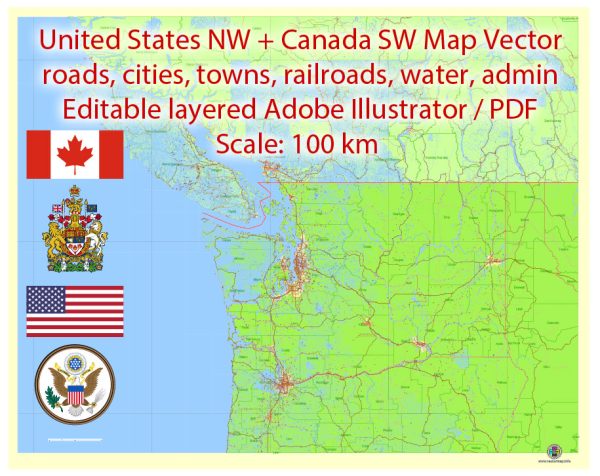Certainly, let’s explore the history of urban development in the Northwestern United States (including cities like Seattle and Portland) and the Southwestern region of Canada (including cities like Vancouver).
Northwestern United States:
Native American Influence:
- Prior to European colonization, indigenous peoples, including the Coast Salish and Duwamish in the Seattle area, had established settlements with their own urban planning practices.
19th Century:
- The mid-19th century brought European-American settlers to the region, attracted by natural resources like timber and fisheries.
- The arrival of the Northern Pacific Railway in the late 19th century contributed to the growth of cities like Seattle, making them important transportation hubs.
Early 20th Century:
- Economic growth continued with the expansion of industries like lumber, shipping, and aerospace.
- Seattle’s economic boom during the Klondike Gold Rush and the Alaska-Yukon-Pacific Exposition in 1909 influenced urban development.
Mid-20th Century:
- The post-World War II era saw significant suburbanization, with the growth of suburbs and the development of the aerospace industry in cities like Seattle.
- The region became a technology hub in the latter half of the century.
Late 20th Century to Present:
- Cities like Seattle and Portland have become known for their emphasis on sustainability, urban green spaces, and transit-oriented development.
- The tech industry, including companies like Microsoft and Amazon, has played a central role in shaping the urban landscape.
Southwestern Canada:
Indigenous Presence:
- Indigenous peoples, such as the Coast Salish, Musqueam, and Squamish, had a significant influence on the region’s early settlement patterns and urban development.
19th Century:
- The arrival of European settlers led to the establishment of trading posts, including Fort Vancouver.
- The completion of the Canadian Pacific Railway in the late 19th century facilitated economic development and urban growth.
Early 20th Century:
- Vancouver, in particular, experienced rapid growth and became an important port city.
- The economic impact of industries like forestry and mining influenced urban development in cities throughout the region.
Mid-20th Century:
- Suburbanization and the development of infrastructure, including the Trans-Canada Highway, contributed to the expansion of cities like Vancouver.
- The post-war era saw an increase in immigration, further shaping the cultural and demographic landscape.
Late 20th Century to Present:
- Vancouver is known for its diverse and multicultural population, with a strong emphasis on urban planning, sustainability, and high-quality living.
- The tech industry, film production, and tourism have become important factors in the region’s economy.
Both the Northwestern United States and Southwestern Canada have experienced dynamic urban development influenced by economic shifts, technological advancements, and a focus on sustainability. These cities have evolved into vibrant, culturally diverse hubs with unique urban planning characteristics.


 Author: Kirill Shrayber, Ph.D.
Author: Kirill Shrayber, Ph.D.